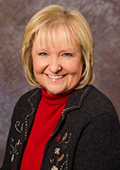How Do We Transform? Think Big, Stay Student-Centered

By Sue Hull, First Vice-Chair, State Board of Education
Remarks to Alaska’s Education Challenge Kick-Off Committee Meeting at Dena’ina Civic & Convention Center, April 20, 2017
On behalf of the State Board of Education, I want to thank you for joining us this morning. We know you have many demands on your time. We’re grateful you prioritized the Alaska Education Challenge.
When the State Board of Education began the strategic planning process almost two years ago, we knew two things:
1) We had bitten off more than we could chew alone—the public, education stakeholders, the Governor and the Legislature would have to be involved. That’s why you’re here. And I know for many of you this is the third or fourth time you’ve engaged with the Board’s priorities. Thank you for your continued commitment. We are also grateful to the Governor for picking up the ball last December and the Legislature’s encouragement thus far.
2) We knew tinkering around the edges would not be enough to close chronic, debilitating achievement gaps and, even more important, to truly prepare kids for a rapidly-changing and globally-competitive world. It is not enough for kids to be prepared for today’s world—they must succeed and thrive in tomorrow’s world. Too often, we’ve been educating them for the past.

Sue Hull addresses the first meeting of Alaska’s Education Challenge
Transformation is really the only course that will serve Alaska’s youngsters. So how do we transform? To be succinct—think big and stay student-centered.
Just to start you thinking…
- What if all students could learn what they needed, when they needed it, how they learn best?
- What if our schools adapted to the student, rather than the student adapting to the school?
- What if learning was cross discipline, skill-based, internationally benchmarked and experiential?
- What if passing a higher-level math class—whether in Anchorage or Alegnagik—meant you wouldn’t be required to take developmental coursework at the university?
- What if no matter where you lived you had access to advanced courses, master teachers & consistent end of course expectations?
- What if teachers were supported to reach the highest levels of their profession and had time to truly mentor students?
- What if the calendar, start times and bell schedules were more flexible?
- What if our tribes, families and communities felt intimate ownership of their schools?
- What if creativity, critical thinking, communication and grit mattered as much as a test score?
- What if schools were safe—emotionally & physically, more culturally connected and trauma informed?
- What if student passions, gifts and goals drove learning, rather than one-size-fits-all approaches? (All of us know people who didn’t do well on a standardized test or get good grades who are highly successful.) What if schools tapped those gifts and connected students with the feeling of success earlier?
- What if mastery was more important than grades and DOING was more important than regurgitating?
- What if every high schooler could earn academic credit in the world of work, even in the summer?
- What if high percentages of high schoolers could graduate with associates degrees or technical certifications? Rather than qualifying for a scholarship, they would get two years free!
- What if our diplomas were internationally recognized for excellence?
Now, lest you think these are just pipe-dream questions, let me assure you they are all occurring elsewhere—in most cases with fewer dollars per student.
It goes without saying, that we won’t have money to throw at the transformation. However, the constraint of existing resources could propel us to more transformative recommendations. Business and education entities around the world have demonstrated that, over and over. Vision and commitment are far more important.
The mission set by the State Board of Education last year is clear–Excellent Education for Every Student Every Day. Please be courageous in pursuit of that goal and craft truly student-centered learning excellence. Your recommendations will go first to the State Board of Education, then to the Governor and where statute is necessary to the Legislature.
Alaska could have the best schools in the world, if we do this right. And by so doing, accelerate and ensure Alaska’s economic success. It’s the right thing to do for kids! Again, on behalf of the State Board of Education, thank you for investing in Alaska’s future.
The views expressed here are the writer’s and are not necessarily endorsed by the Association of Alaska School Boards. AASB welcomes diverse perspectives and civil discourse. To submit a Guest Column for consideration, see our Guest Column Guidelines and email your 400-1000 word submission HERE.
